xiamen ZonWu LoRaWAN water quality blue-green algae sensor is an ultra-practical wireless low-power IoT device. It can collect water quality data, monitor the blue-green algae situation in real time, and transmit this information to the outside world. It relies on the fluorescence principle and comes with automatic temperature compensation function, no matter how the water temperature changes, it does not affect the measurement. And it supports the standard LoRaWAN protocol, even at great distances, data can be transferred smoothly, ideal for environments where water quality is always monitored online.
Product Model :
LW108-BGAPower Supply Mode :
Battery or External DCFrequency :
CN470/IN865/EU868/RU864/US915/AU915/ KR920/AS923-1&2&3&4MAC Version :
LoRaWAN 1.0.3Mode :
OTAA Class A/CWeight :
150gWater Quality Blue Green Algae Sensor
xiamen ZoneWu LoRaWAN water quality blue-green algae sensor is a device that can measure the concentration of blue-green algae in water wirelessly.
xiamen ZoneWu LoRaWAN water Quality Blue Green Algae Sensor Features:
The blue-green algal sensor works on a fluorescent principle. It is faster and more efficient than the previous manual counting of blue-green algae.
The sensor has a special filtering algorithm, even if the outside light is messy, it cannot interfere with its normal operation, and the measured data is accurate.
It has temperature-transmitting device, which can automatically adjust the result of a measurement according to the variation of water temperature, no matter what water temperature condition, it can be stable measurement.
This sensor is very easy to maintain. If there is a problem with the probe of the blue-green algae sensor, you can quickly replace it without calibration.
Through the aviation connector, it can be connected to the LoRaWAN collector, and then the measurement data can be transmitted wirelessly, simple and convenient.
Rivers, lakes, ponds, marine surveys, fish and shrimp farming, drinking water sources monitoring, and algae and phytoplankton studies can be used to detect them.
Technical Parameters
|
Power Supply |
DC12/24V |
|
Weight |
150g |
|
Measuring Range |
0~300000 cells/ml |
|
Temperature Measurement Range |
-20-80℃ |
|
Resolution |
1cells/ml; Temperature:0.1℃ |
|
Pressure Resistance |
0.6Mpa |
|
Electrode Usage Cycle |
6-12 months |
|
Transmitter Line length |
Default 5m (other lengths can be customized) |
|
Frequency |
CN470/IN865/EU868/RU864/US915/AU915/KR920/AS923-1&2&3&4 |
|
Mode |
OTAA Class A/C |
|
Reporting cycle |
5min(Default ) |
|
Communication Protocol |
LoRaWAN,LoRa TDMA Networking |
|
Equipment information (Reference) |
AppEUI:0000000000000001 DevEUI:aaaa202404150001 AppKey:00001111222233334444555566667777 MAC Version: LoRaWAN 1.0.3 |
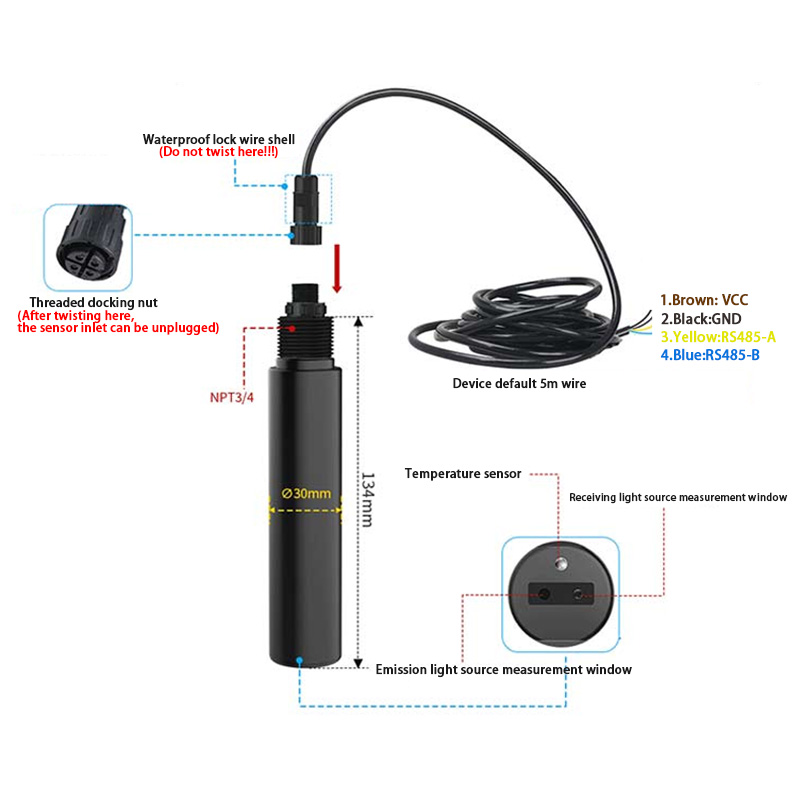
Blue Green Algae Transmitter Size and Installation
1. Submerged installation: The lead wire of the equipment is passed through the waterproof pipe, and the 3/4 thread on the top of the equipment is connected with the 3/4 thread of the waterproof pipe with raw material tape. Make sure that the top of the equipment and the equipment lines are free of water.
2. Pipe Installation: Connect to the pipe through the 3/4 thread of the device.
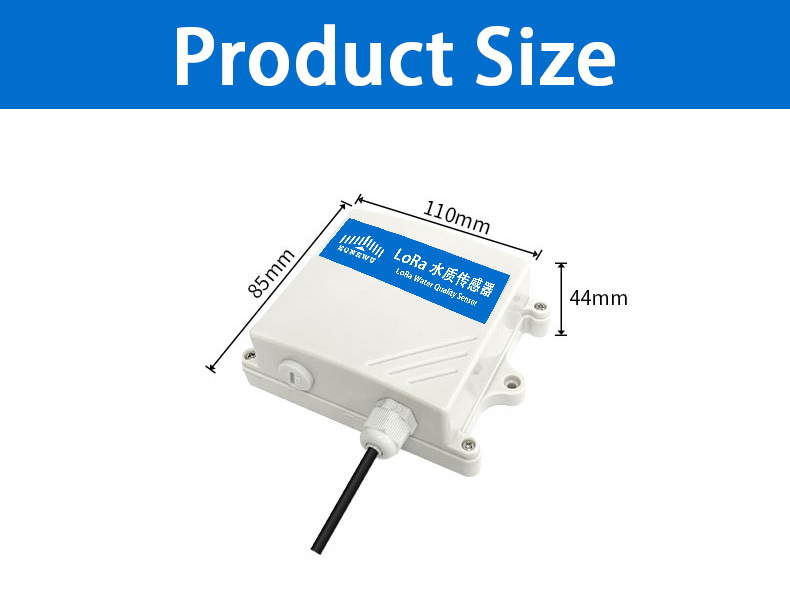
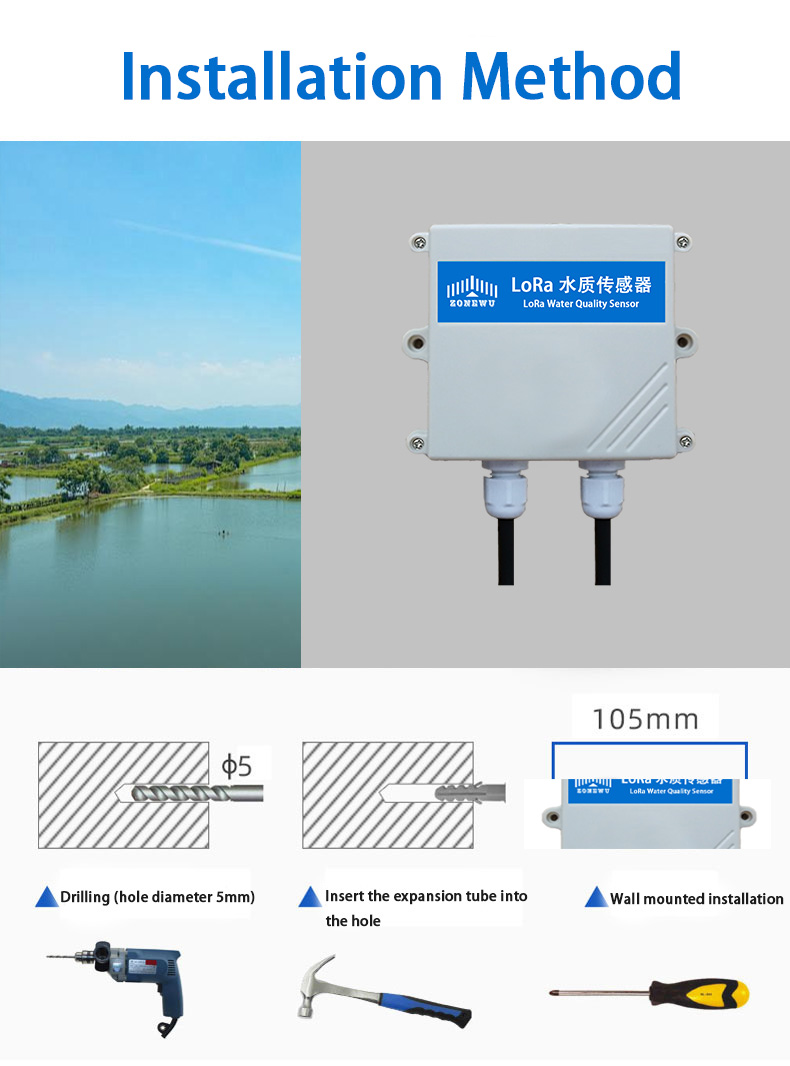
Common knowledge of blue-green algae:
Blue-green algae to form a large number of breeding "Huawei," why will lead to a large number of fish deaths
Cyanobacteria, also known as blue-green algae or cyanobacteria, are prokaryotes; Most blue-green algae have a glial coat on the outside of their cell walls, hence they are also known as slime molds. In some nutrient rich water bodies, some blue-green algae often reproduce in large numbers in summer and form a layer of blue-green and foul smelling foam on the water surface, known as "algal blooms". Large scale outbreaks of blue-green algae can cause water quality deterioration, and in severe cases, can lead to the massive death of fish due to the depletion of oxygen in the water, causing incalculable economic losses. The concentration of blue-green algae in water reflects to some extent the quality of the water.
Algae formation is related to water quality and meteorology, so why should blue-green algae monitoring be comprehensive
Measuring the density and concentration of algae in water bodies is one of the important indicators for determining eutrophication. However, due to the close relationship between the formation of algae and not only water quality factors, but also meteorological conditions, when monitoring blue-green algae, people often cannot simply choose one or a limited number of indicators for monitoring. Usually, people will conduct comprehensive monitoring of meteorology and water quality.
There is generally no clear limit for algae density, so what is the limit for severe color changes
Strictly speaking, there is no limit to the density of algae, but in general, there will be significant color changes if it exceeds 10 ^ 7 (10 million).
What are the WHO and Ministry of Health Level 3 limits for algae from drinking water sources
The third level limit values recommended by the World Health Organization (WH0) and the Ministry of Health for drinking water sources are:
Safety limit: 1.0x10~4 pieces/liter (10000 pieces/liter).
Warning limit: 2.1x10~5 pieces/liter (210000 pieces/liter).
Hazard limit: 1.2x10~6 pieces/liter (1.2 million pieces/liter).
Application Scenarios
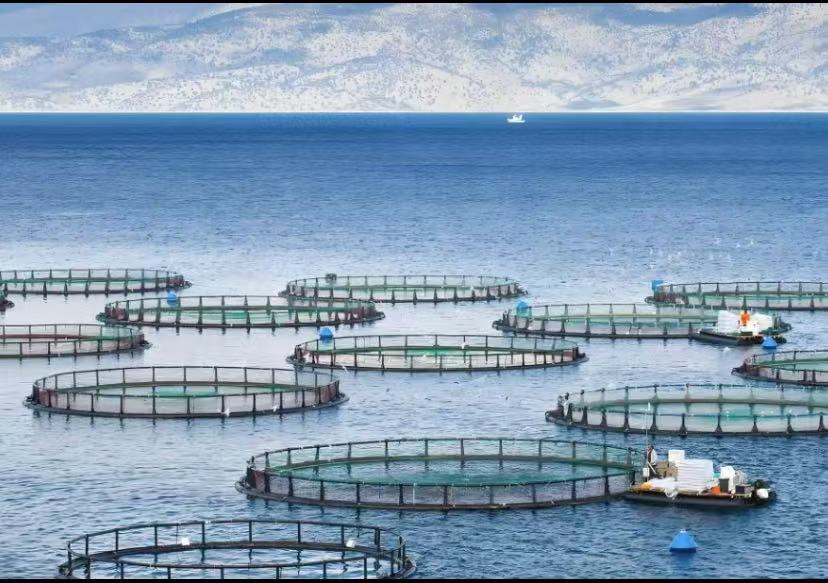
Aquaculture
Monitor the calcium ion concentration of aquaculture bodies to ensure the health of aquaculture organisms and the stability of water quality.
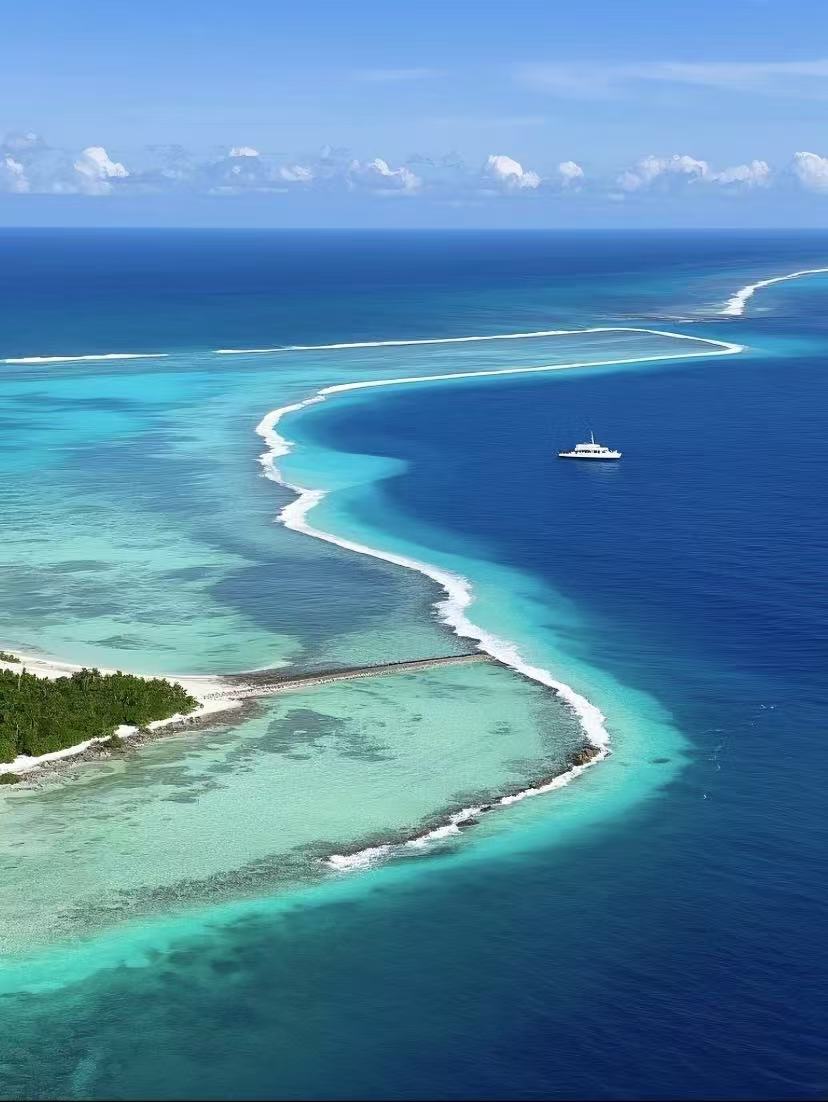
Seawater Monitoring
Monitoring the concentration of calcium ions in seawater is conducive to marine ecological research and the regulation of seawater aquaculture.
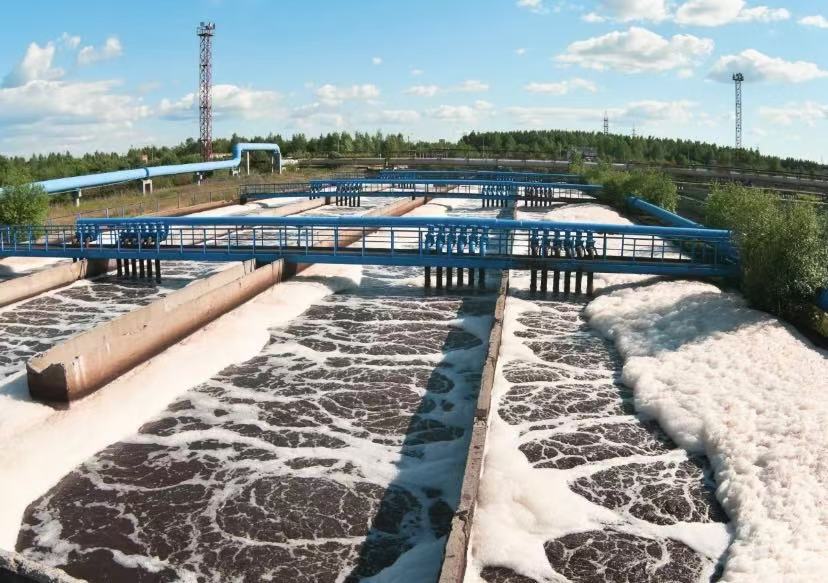
Industrial Wastewater
Monitoring the concentration of calcium ions in industrial wastewater helps with wastewater treatment and achieving compliance with discharge standards.
A:Yes,we can provide you with OEM services and design housings and logos.
3.DO you offer free samples?
A:Sorry,we don't offer free samples.After ordering in bulk,we will deduct the sample fee from the second order.
Why Choose ZONEWU